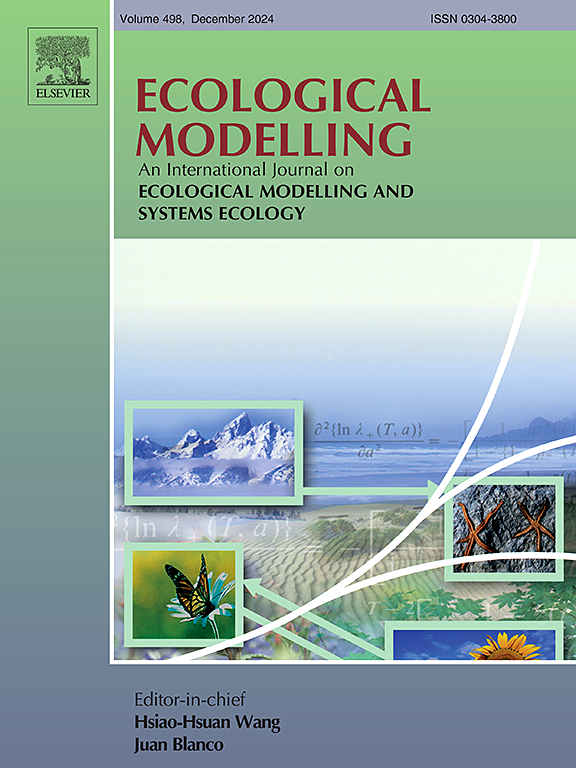A new multitrophic model for olive tree, olive fly and fly predators to support risk management in operational contexts
IF 2.6
3区 环境科学与生态学
Q2 ECOLOGY
引用次数: 0
Abstract
The production of olive (Olea europea) oil – a boast within Mediterranean agriculture – is periodically threatened by the olive fruit fly (Bactrocera oleae). The limited effectiveness of classical strategies for control of olive fly populations and related damages requires new solutions to support both prevention (e.g., early warning systems) and risk transfer (e.g., index-based insurance products). Biophysical models have been used successfully to reach these goals for a variety of cropping systems, but not to reproduce the olive tree-olive fruit fly multitrophic dynamics in operational contexts. We have developed a new model simulating olive tree (including key abiotic stressors), olive fruit fly (including its predators), and their interactions, specifically targeting on-farm applications. We integrated existing algorithms for each species with newly developed equations to improve the formalization of key biophysical processes. Model behaviour was assessed through sensitivity analysis and its performance evaluated under a wide range of agro-climatic conditions, using data on both olive tree growth and fly infestation. To our knowledge, this is the first time a model including a detailed simulation of the physiology of both species has been tested against observed fly damage (percentage of fruits infected). The good agreement between model outputs and observations (mean absolute error of 0.65 t ha−1, 0.87 t ha−1, and 5.4 % for, olive tree aboveground biomass, fruit dry mass, and percentage of fruits attacked, respectively) ‒ together with the parsimony in terms of model inputs – encourage its use to support olive tree growers in controlling this key pest.
求助全文
约1分钟内获得全文
求助全文
来源期刊

Ecological Modelling
环境科学-生态学
CiteScore
5.60
自引率
6.50%
发文量
259
审稿时长
69 days
期刊介绍:
The journal is concerned with the use of mathematical models and systems analysis for the description of ecological processes and for the sustainable management of resources. Human activity and well-being are dependent on and integrated with the functioning of ecosystems and the services they provide. We aim to understand these basic ecosystem functions using mathematical and conceptual modelling, systems analysis, thermodynamics, computer simulations, and ecological theory. This leads to a preference for process-based models embedded in theory with explicit causative agents as opposed to strictly statistical or correlative descriptions. These modelling methods can be applied to a wide spectrum of issues ranging from basic ecology to human ecology to socio-ecological systems. The journal welcomes research articles, short communications, review articles, letters to the editor, book reviews, and other communications. The journal also supports the activities of the [International Society of Ecological Modelling (ISEM)](http://www.isemna.org/).
 求助内容:
求助内容: 应助结果提醒方式:
应助结果提醒方式:


